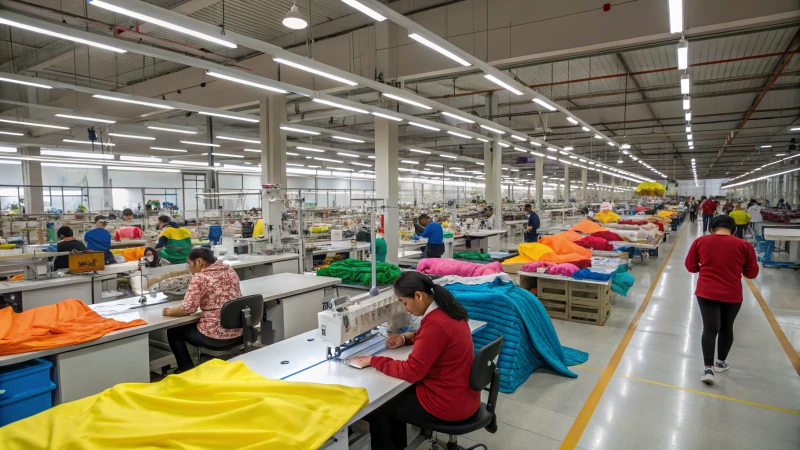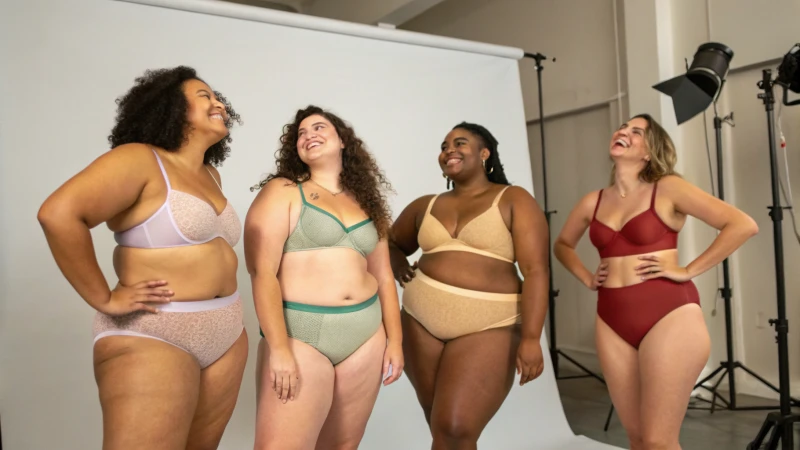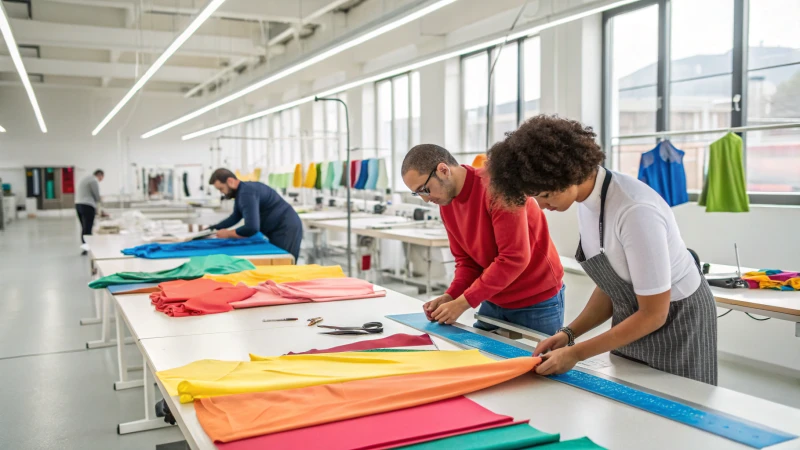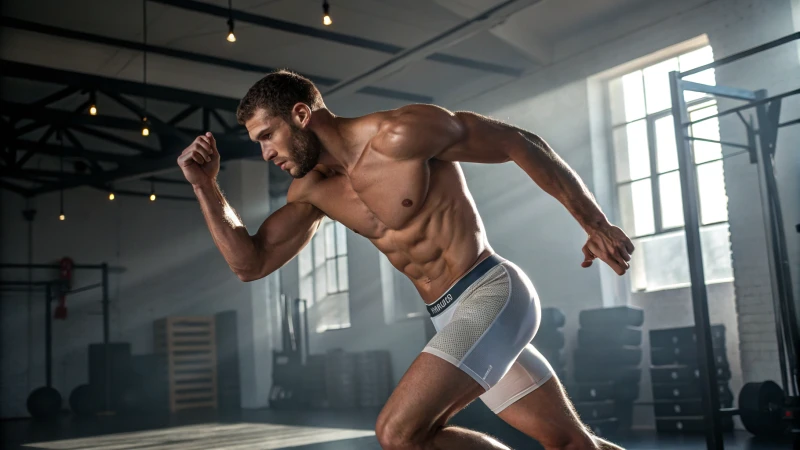
Think about long jogs or tough workouts when your clothes just felt wrong. High-performance underwear helps with this problem. It mixes comfort with new technology.
High-performance underwear controls body heat. It keeps you cozy and manages athletic performance by controlling body warmth. This underwear removes sweat and reduces bad smells. The technology stops overheating or feeling cold. It helps you stay dry and fresh. This is very important during exercise.
I once wore regular cotton underwear while jogging and it was a mistake I won't repeat. The chafing and discomfort were really bad. That's when I found thermal-regulating underwear. This type keeps comfort at the right level, no matter the weather or workout intensity. It's amazing.
These underwear are very interesting. Advanced fabrics respond to your body's needs by removing sweat from your skin to keep you dry. It feels like a personal climate control wrapped around you. This lets you focus on your limits without discomfort. This is truly a big change for athletes or anyone who loves to stay active. It really changes the performance and comfort.
High-performance underwear wicks moisture effectively.True
Moisture-wicking technology keeps athletes dry by drawing sweat away.
Thermal regulation in underwear increases body temperature.False
It maintains optimal temperature, preventing overheating or excessive cooling.
What Technologies Are Used in Thermal-Regulating Fabrics?
Picture a world where clothes change with your body's temperature. These clothes keep you comfortable in any weather. Curious? Let's explore how special fabrics do this job.
Thermal-regulating fabrics use technologies such as phase change materials (PCMs) and microencapsulation to control body heat. PCMs hold and let go of heat by absorbing it. Microencapsulation keeps these materials in small capsules, which improves how the fabric works.
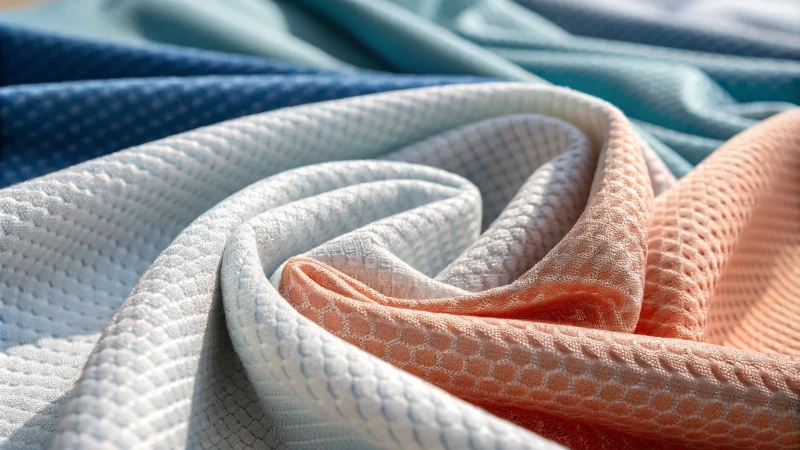
Phase Change Materials (PCMs)
During my first winter hike, I felt cold one moment and too hot the next. That's when I learned about phase change materials (PCMs). These amazing things in fabric soak up extra heat when you feel warm and give back heat when you cool down. It's like having a weather control system right in your clothes. I find PCMs very helpful in outdoor clothing. Unpredictable weather becomes less scary. Learn more about PCMs1.
Microencapsulation Technology
How do these phase change materials stay inside the fabric? Microencapsulation technology does the job. This process puts PCMs into tiny capsules all over the fabric. It keeps the temperature steady, even when you move a lot. When I run wearing sports clothes with this tech, the fabric feels like it adjusts with every step. I remain comfortable from start to finish. Explore microencapsulation2.
Advanced Moisture-Wicking Fibers
On a hot and sticky day at a family picnic, I discovered how moisture-wicking fibers work. They are crucial for drawing sweat away from the skin, keeping me dry. These fibers act like an invisible shield, stopping clothes from sticking to me. Outdoor activities become enjoyable without discomfort. Discover moisture-wicking3.
Intelligent Fabric Blends
Merging different fibers creates something special. Mixing wool, which keeps heat, with synthetic fibers for strength and moisture control is a breakthrough. Athletes and outdoor fans like me find this blend useful. I once wore a jacket with such a mix during a mountain hike; it was light and very warm, offering the best of both worlds.
Technologies Summary Table:
| Technology | Functionality | Application |
|---|---|---|
| PCMs | Absorb/Release Heat | Outdoor Gear |
| Microencapsulation | Distribute PCMs | Sportswear |
| Moisture-Wicking | Keep Dry | Activewear |
| Fabric Blends | Insulate & Durable | Performance Wear |
These innovations have changed my experience with nature by bringing comfort and flexibility that once seemed like science fiction.
PCMs are used in thermal-regulating sportswear.True
PCMs help regulate temperature, ideal for sportswear.
Microencapsulation is irrelevant to moisture-wicking.False
Microencapsulation evenly distributes PCMs, not related to moisture-wicking.
How Does Moisture Wicking Work in High-Performance Underwear?
Do you ever think about why some underwear stays dry but others feel sticky? This difference results from moisture-wicking technology. It's a game-changer. People who sweat a lot really benefit from it. Whether you're exercising or just going through your day, it helps.
Moisture-wicking underwear pulls sweat from your skin to the outside of the fabric. It then evaporates fast. You stay dry. You feel comfortable. You avoid chafing during different activities.

The Science Behind Moisture Wicking
Let's explore how this process works. You're at the gym, running on the treadmill. Sweat flows, but instead of soaking your clothes and gluing them to your skin, moisture-wicking fabrics step in. These fabrics, often a mix of synthetic fibers like polyester or nylon, help keep you dry. They differ from cotton, which clings to sweat, by pushing it to the surface to evaporate.
Fabric Structure and Design
Think of high-performance underwear as tiny engineering wonders. The fabric features tightly woven threads with microscopic channels. These channels guide sweat outward, similar to how trees move water from roots to leaves. This design helps keep you cool.
| Feature | Description |
|---|---|
| Fiber Type | Polyester or nylon blend |
| Weave Structure | Microscopic channels |
| Evaporation Rate | Rapid |
Benefits of Moisture Wicking
Discovering moisture-wicking underwear felt like a breakthrough. Suddenly, I didn't have to keep adjusting clothes during exercise. The garments kept me dry and very comfortable, reducing moisture and avoiding annoying chafing and skin irritation. They also manage temperature, keeping your body steady during hard workouts.
By reducing moisture buildup, these garments help prevent chafing and skin irritations often caused by dampness. Furthermore, they play a critical role in temperature regulation4, ensuring the body remains at a stable temperature during vigorous activities.
Advances in Moisture-Wicking Technology
Technology keeps growing. Some brands now add materials that fight odor, so underwear not only deals with sweat but also stays fresh-smelling all day! Some options made from recycled materials are great for eco-friendly choices.
Recent innovations have introduced hybrid fabrics combining moisture-wicking with antimicrobial properties to combat odor. Some brands now incorporate silver ions5, known for their antibacterial effects, into the fibers, offering an extra layer of freshness.
| Innovation | Benefit |
|---|---|
| Antimicrobial | Odor control |
| Eco-friendly | Sustainable choices |
Knowing how moisture-wicking technology functions helps you pick the best performance underwear for both gym sessions and staying dry on warm days.
Moisture-wicking fabrics use natural fibers like cotton.False
Moisture-wicking fabrics primarily use synthetic fibers like polyester, not cotton.
Moisture-wicking underwear prevents chafing.True
By keeping the skin dry, moisture-wicking underwear reduces the risk of chafing.
Can Thermal Regulation Improve Athletic Endurance?
Picture yourself running a marathon. You feel as fresh at mile twenty as you did at mile two. This very special energy could probably come from thermal regulation. It might really be the secret weapon you need!
Yes, thermal control increases athletic endurance by keeping the body at the right temperature. This process keeps athletes comfortable and reduces tiredness. Proper body heat management allows athletes to stay strong during exercise. It also helps the body use energy wisely. Athletes avoid getting too hot. They remain able to perform longer.

Understanding Thermal Regulation in Sports
Imagine training for your first marathon. You feel certain about your abilities, but the summer heat nearly overwhelms you. Then you understand: keeping cool is not optional, it's crucial. Thermal regulation6 is about keeping your body at a steady temperature no matter the outside weather. This concept is a game-changer for doing your best.
Intense sports activities make your body produce a lot of heat. Good thermal regulation helps get rid of this heat, stopping overheating and tiredness.
Key Benefits of Thermal Regulation:
| Benefit | Description |
|---|---|
| Temperature Control | Maintains a stable core temperature to prevent overheating or chilling. |
| Moisture Wicking | Draws sweat away from the skin to keep athletes dry and comfortable. |
| Comfort Enhancement | Reduces discomfort, allowing athletes to focus on performance. |
Mechanisms Behind Thermal Regulation
Sweat Evaporation:
Imagine running under the blazing sun. Your sweat glands start to work, making sweat that evaporates from your skin, cooling you. This process is very important for keeping cool during long exercise or competitions.Blood Flow Adjustment:
This is like how a car radiator works. Blood vessels near your skin can widen or shrink to control heat. When they widen, more blood reaches the skin and heat can escape more easily.Use of Specialized Gear:
Think about those modern running shirts. These clothes often use fabrics that pull moisture away and let air through, helping control body temperature with moisture wicking7 properties.
Practical Implications for Athletes
Knowing about thermal regulation changed how I trained. Wearing gear that supports keeping the right temperature improved how long I could endure. Drinking enough water helps the body's natural cooling too; staying hydrated matters.
Case Studies and Real-World Examples
Studies show that marathon runners wearing thermoregulated gear feel less fatigue. Cyclists also report more endurance in hot weather when using moisture-wicking clothing.
Table: Influence of Thermal Regulation on Different Sports
| Sport | Primary Benefit of Thermal Regulation |
|---|---|
| Marathon | Reduced fatigue during long-distance running. |
| Cycling | Enhanced endurance in high-temperature zones. |
| Soccer | Improved agility and sustained performance. |
Strategies for managing temperature help athletes maybe improve endurance and achieve better performance outcomes in their respective sports.
Thermal regulation prevents athlete overheating.True
Thermal regulation helps maintain stable body temperature, preventing overheating.
Moisture-wicking fabrics hinder performance.False
Moisture-wicking fabrics enhance comfort and endurance by keeping athletes dry.
Why Is Odor Reduction Important in Sportswear?
Have you ever ended a workout and longed for your gear to have the fresh scent it had at the start? Learn why cutting down odors in sportswear is more than just a nice touch. It is vital for every athlete.
Reducing smell in sports clothes is very important. Bacteria grow fast on sweat, causing bad odors. Using special anti-smell technology keeps the clothes fresh and comfortable for a long time. Athletes stay fresh. Freshness helps athletes stay focused. Confidence increases when they feel fresh during tough activities.
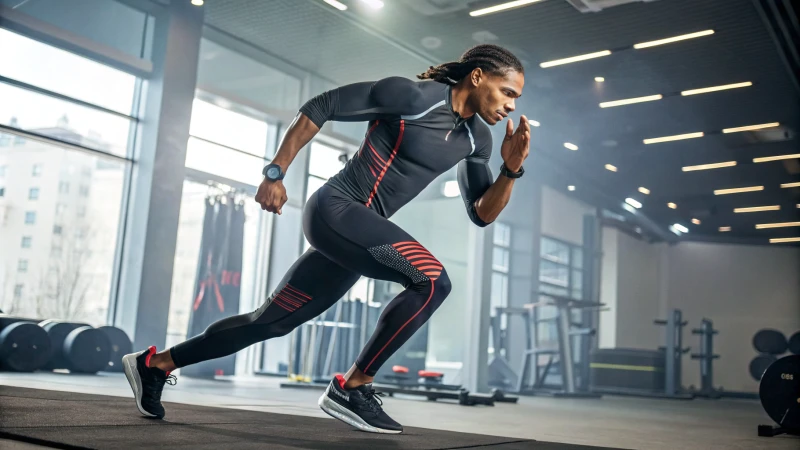
The Science Behind Reducing Odor
Imagine finishing a long run, covered in sweat, and your clothes feel exhausted too. That's because odor comes from bacteria enjoying your sweat. These tiny invaders break down proteins in sweat, leaving bad smells behind. Thankfully, odor reduction steps in like a hero with special fabrics that keep bacteria away. This keeps your gear fresh.
Odor reduction technology uses antimicrobial fabrics8 to prevent bacteria from thriving, keeping garments fresher longer.
Benefits of Sportswear That Reduces Odor
When I first wore odor-reducing sportswear, everything changed. No more worrying about how I smelled at the gym. It was really worth it.
- Comfort: No one wants to be the smelly person at the gym. These clothes help you focus on breaking records without bad smells.
- Hygiene: Fewer bacteria mean fewer risks of skin problems. Happy skin helps me perform my best.
- Garment Life: Before, I washed gear more than wearing it. Now, less washing keeps clothes looking new.
| Benefits | Description |
|---|---|
| Comfort | Focus on performance without distraction from body odor. |
| Hygiene | Less bacterial growth minimizes skin irritations. |
| Garment Life | Fewer washes mean less wear and tear on your sportswear. |
How Anti-Odor Technology Functions
Curiosity about this technology led me to explore it. Silver ions or other agents in fabric fibers stop bacteria growth, cutting down odors. Moisture-wicking materials also keep sweat away, giving bacteria less chance to grow.
Anti-odor technology often involves embedding silver ions or other antimicrobial agents into fabric fibers to hinder bacterial growth and reduce odors9. Innovations like moisture-wicking materials10 also play a role by keeping sweat away from the skin.
Picking the Right Sportswear
Choosing the right gear can feel tough with so many choices. It's worth checking clothes for odor-fighting features. I read labels for specific technologies or treatments and even ask experts or read reviews to see how they work during workouts.
When selecting sportswear, consider garments that highlight their odor-reducing properties by looking for labels mentioning specific technologies or treatments used.
Environmental Impact and Sustainability
Caring about our planet made me wonder if advanced textiles hurt sustainability. Thankfully, many brands combine odor-fighting with eco-friendly methods.
The use of advanced textile technology can sometimes raise concerns about sustainability; however, several brands are now focusing on eco-friendly options that combine odor-reduction technology11 with sustainable practices.
For those searching for sustainable sportswear12, it's essential to research brands that emphasize both performance and ecological responsibility.
Odor in sportswear is caused by bacteria on sweat.True
Bacteria breaking down sweat proteins release unpleasant odors.
Anti-odor technology only uses silver ions.False
It also involves other agents like antimicrobial fabrics to reduce odor.
Conclusion
High-performance underwear utilizes thermal regulation and moisture-wicking technology to enhance comfort, reduce odors, and improve athletic performance by maintaining optimal body temperature during physical activities.
Understand how PCMs regulate temperature by absorbing and releasing heat, enhancing comfort. ↩
Discover how microencapsulation evenly distributes thermal-regulating materials in fabrics. ↩
Learn how moisture-wicking fibers maintain dryness and comfort in thermal fabrics. ↩
Discover how moisture-wicking technology helps maintain optimal body temperature during physical exertion. ↩
Explore how silver ions provide antibacterial properties, enhancing fabric freshness and longevity. ↩
Exploring this link provides insights into the physiological mechanisms of thermal regulation in sports. ↩
This link explains how moisture-wicking fabrics contribute to comfort and performance. ↩
Explore how antimicrobial fabrics work to reduce odors and improve hygiene in sportswear. ↩
Learn about the role of silver ions in preventing bacterial growth in sportswear fabrics. ↩
Discover how moisture-wicking materials enhance comfort and odor control in athletic clothing. ↩
Find out how odor-reduction technology is being incorporated into eco-friendly sportswear. ↩
Identify brands that offer eco-friendly sportswear with effective odor control features. ↩



